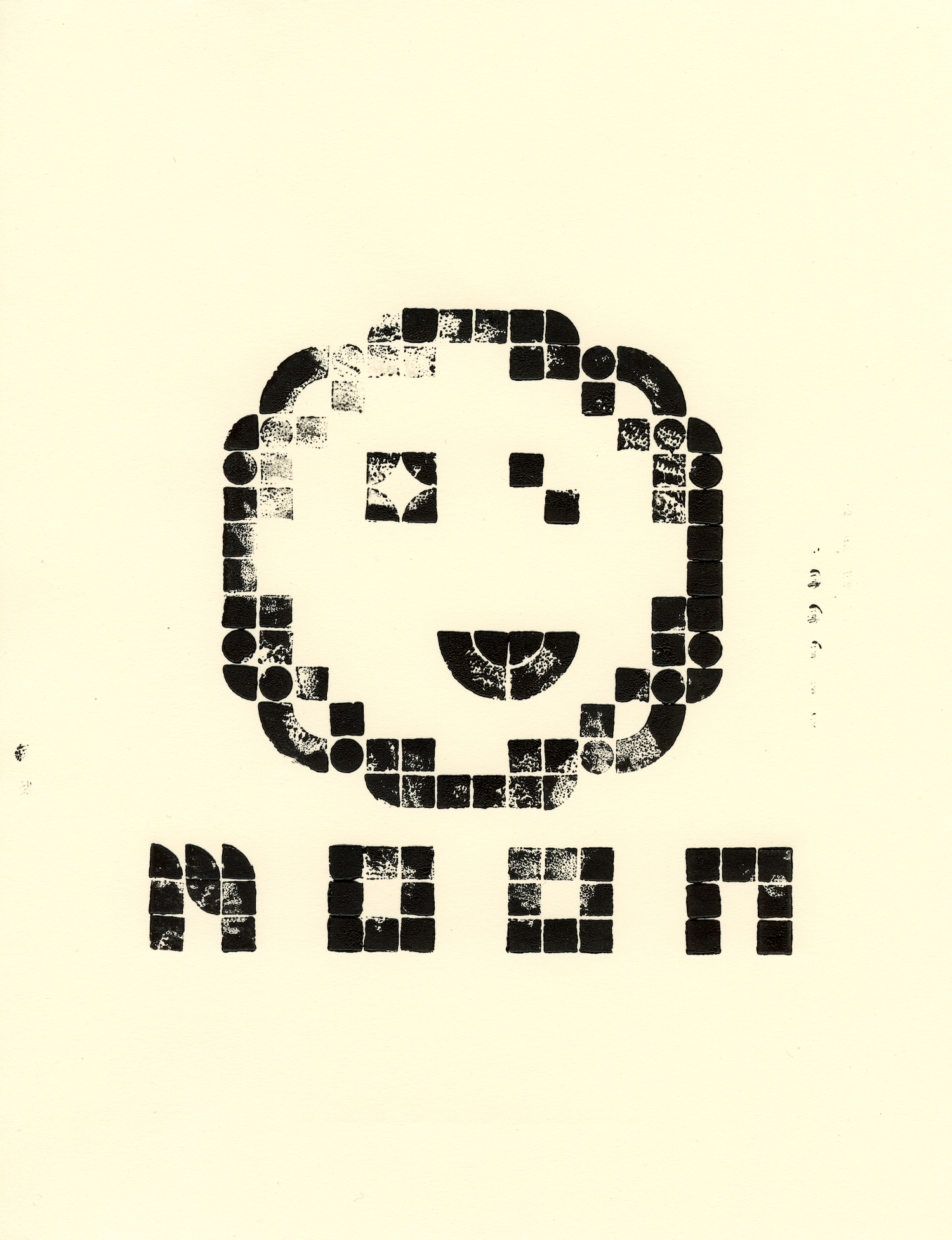| ID | Name | Type |
|---|---|---|
| 24 | A Trip to the Moon and then the Playground | Print Art |
Details
Remember the printers in Office Space—printing as a representation of work, but what if instead printing can be play?
I arranged some LEGO bricks to create a moon and used that to create a relief print on paper. By just applying screen-printing ink on top of the LEGO bricks (which were affixed to a larger LEGO board), a playful printing press is made.
A toy is on its way to the moon, because we don't even play on Earth anymore. Why do we have to go to the kids' toy aisle to find things to play with?
There are LEGO sets for adults, and a lot of adults do like LEGO, but is that even play? Sets designed for adults focus on making something that is nice to display, instead of embracing the inherit advantage of the LEGO brick, that it can be constructed and deconstructed. Likewise, adult kits have specific and elaborate instructions to create something that is semi-realistic. Compare that to LEGO for kids, where there might just be a bunch of bricks for kids to make something with, or even if there are instructions, they act more as templates to build abstractions of an object because the constructions are usually too simple to realistically depict real-life objects. (This may be less true now, as it seems LEGO for kids and adults are now really focused on licensed, instruction-based kits.)
The difference reveals the shift in focus, less on the playing aspect, and more on achieving the end build. The focus on realism and complicated instructions are both devices to move someone away from imagining, and into the narrow scope of skill-building. We are deluded into thinking that as adults, play is the rewarding sense of accomplishment from using our time productively instead of play as this expansive playground to create worlds and imagine possibilities. We've traded the ephemeral infinites of creating and destroying and creating and destroying, for the opportunity to follow instructions once to create a trophy for a licensed world that is not imagined, nor owned by the person constructing it. Our power to play, to construct something out of an empty canvas, has been robbed, replaced by the soulless duplication machine that we project printers to be.
Georges Méliès' A Trip to the Moon, the iconic film that crammed a bunch of special effect ideas into less than 20 minutes, still feel fresh today. It's brimming with creative ideas even though over a century of filmmaking and filmmaking technology has "progressed" since. I think part of it was that film wasn't taken as seriously then. A Trip to the Moon fell into the sub-genre of trick films, little experiments with light and video, something like a parlor trick, but also something just a bit playful. And I think that play was and is key.

